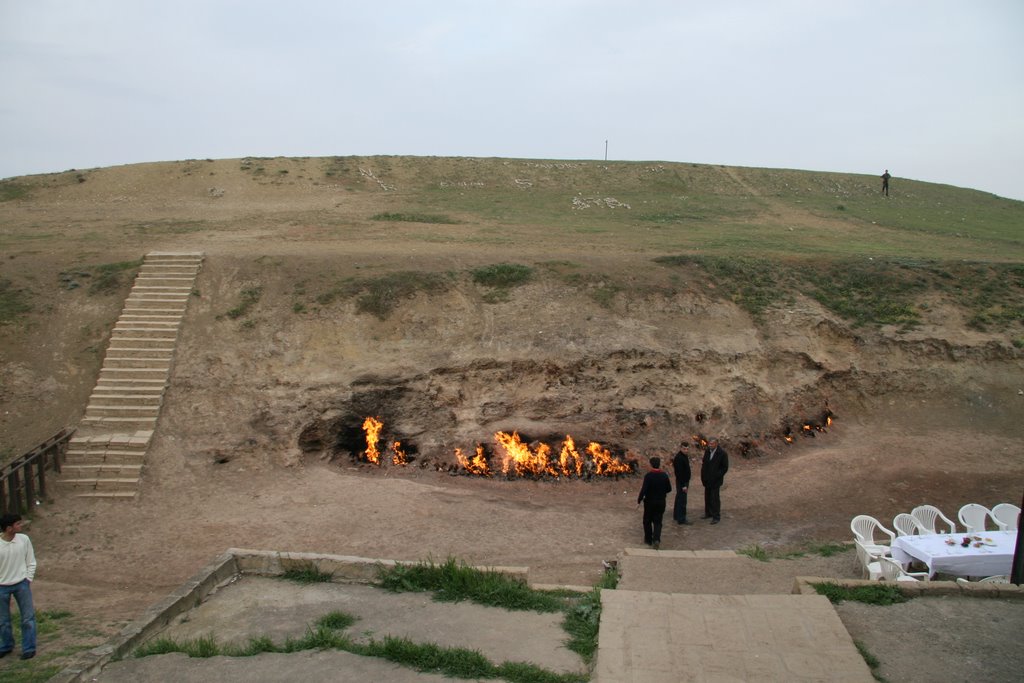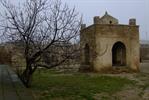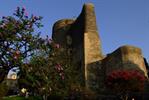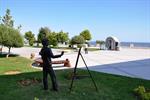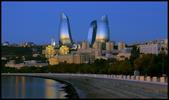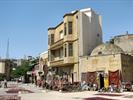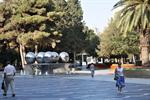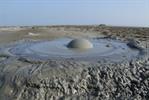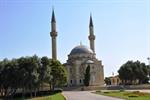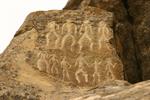Azerbaijan is not the most frequented tourist destination, most people would find it difficult to locate on the world map. It will unlikely ever be a tourist Mecca but that brings its own advantages. Those who prefer to go unbeaten path, to explore less visited places and check national charisma will undoubtedly have an interesting experience in this small country in Southern Caucasus on the edge of Europe.
Azerbaijan is an oil booming economy. That brings a lot of contrast to the county between rich and poor, national and cosmopolitan, authentic and replicated. Everyone will find something interesting to himself. Keep in mind, that the country is quite expensive and don’t be shocked with the prices for services that might be double of those in major European capitals. Oil bring money, lot of money brings inflation that in turn makes all expensive. Still budget travelling is possible if you know your ways, have sense of humor and some adventure spirit.
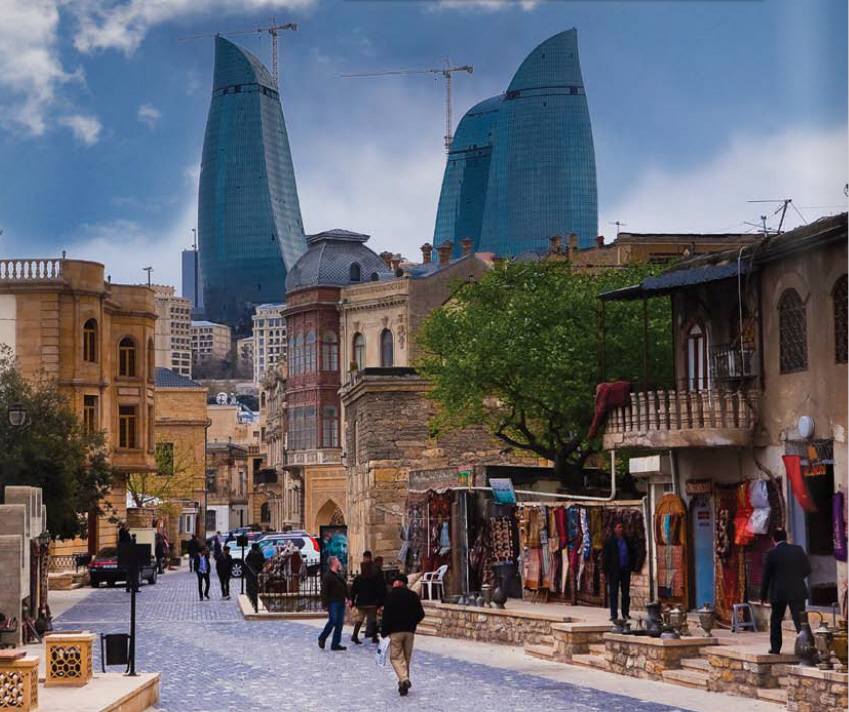
The first major obstacle for your coming to Azerbaijan is the need to obtain visa. Unlike its neighboring Georgia and Armenia, Azerbaijan have a strict visa regime with all visas needed to be obtained before your travel. Visas can be obtained either through Azeri embassies across the world, or electronically when you apply for visa online through one of the Azeri travel agents. Don’t delay visa arrangements and try to apply no less than 4 weeks before your planned travel dates. Electronic visa is generally an easier and recommended way to apply as it will save you from visits to the embassy and partying with your passport for a week or two.
Once you are in Baku there are a number of places to visit and we will point just some of them that we believe are truly must-see.
Baku Boulevard
Baku Boulevard is a beautiful several km promenade and ideal for long walks both by day and by night. It has undergone an amazing transformation and turned into a promenade many European cities can only dream of. It is very clean, green and well groomed area. The boulevard has a European look that makes it a great choice for a stroll both in daytime and with evening illumination. In some places you can walk right next to the Caspian Sea and enjoy a beautiful view over the Baku bay.
This place is very popular among locals who loves to be there with their families at the weekends and expats who jogs there. In the evenings and on weekends literally the half of Baku population is out walking, strolling, cycling, drinking tea, sipping beer, eating, fishing… It is definitely a hub of activity and offers plenty of chances for people watching. There are plenty of cafes where you can enjoy a cup of local tea or relax with a beer.
There are a couple of big modern malls along the boulevard as well as a beautifully maintained park that is complete with brass person themed statues.
Walk the Boulevard from either end and then walk back through the parks. You can start by crossing over to the Boulevard at the Marriott pedestrian tunnel and making your way at a gentle pace to the Flag square at the far end.
There are a number of attractions along the boulevard: Freedom and Flag squares, Mini Venice and a number of small statues (The captain, The fisherman, etc). The one drawback is the Caspian Sea pollution and some days the smell of oil can be just overwhelming.

Old City
Any visit to Baku would be incomplete without visiting its Old City (Icheri Sheher). People still live within the walls of Old City that has an interesting architecture of buildings so close to each other, alleys so narrow with sudden twists and turns, reminding of ancient parts of Istanbul or a Spanish barrio. At some moment you can have a feeling that time had stopped and you are in the middle of Oriental medieval town. Still many people complain that the true old character of the place was destroyed by massive refurbishment and "upgrades" to modern standards.
Just across from Maidens Tower, you can book an audio tour (5 Euros) that will explain all the interesting points through the old town. Some highlights are of course; Maiden's Tower, the city wall and two caravansaries.
For the "Old" city it has been neatly refurbished so cobblestone streets and many buildings inside the city walls are actually quite new. There are some ancient old bits left, such as Maiden Tower, walls itself, but most is nice new stone that just looks old. Regardless, it is an interesting place to stroll with some national cuisine restaurants and plenty of shops with local crafts, antique ware and souvenirs for sale. It is a great place to wonder up hill and down, discover local crafts, enjoy views of the sea, and leisurely stroll. You will be enjoying the views of ordinary people’s daily life, catching perfect moments with merchants and playing backgammon, chess or domino, children running up and down the many steps and alleyways. It will take you at least 3 hours if you explore every little street or alley.
A great variety of souvenirs can be bought in the many shops in the main street leading to the Archaeological Site and the Maiden Tower. You can also enjoy a nice dinner in any of the restaurants located there with spectacular views of the Caspian Sea and the Flame Towers at night, for instance the Restaurant Sultan Inn. This is an experience, which should not be missed during your stay in Baku.
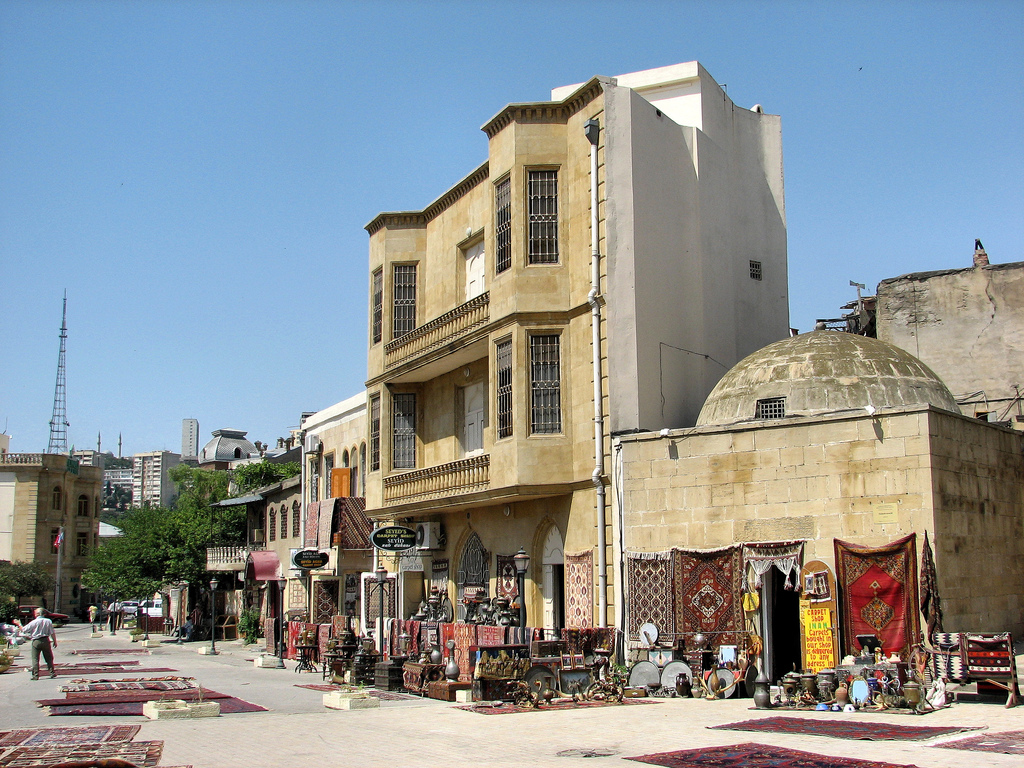
Maiden Tower
This solitaire mysterious tower in the main entrance of Old Town captures the attention of all travellers and makes beautiful pictures. The tower is the pride and joy of Baku. There is a debate on when exactly it was built, but according to some historians, it dates back to the 9th century. You can go up to the top through the narrow stairs, which are quite high! Each level has a small historical/cultural display and the final level before before reaching the top has a fun cultural dress area for souvenir photos (extra fee). Once you reach the top, you will be dazzled with a panoramic view of the marina, the old city and the many new high rises of Baku.
There are many legends associated with the Maiden Tower. According to one of them, the shah fell in love with his own daughter and decided to marry her. Terrified by the forthcoming marriage with her father, and wishing to dissuade him, the daughter asked him to build a tower and wait until its construction was completed. When the tower was ready, the shah did not change his mind. And then the girl climbed the tower and threw herself into the sea.

Fountain Square
Close to Old Town, the Fountain square is crossroad to everything walking distance in Baku. Different fountains adorn the square, which marks a real centre point of the city, and you will probably end up here at some point during your trip to Baku.
Baku has itself many pretty fountains, like in the Governor´s park, in Philharmonic park, the White Fountain, but the difference with Fountain Square is the quantity and diversity of the fountains, the pedestrian walks and the sculptures around the fountains.
There are lots of shops, restaurants and fast food outlets as well as an abundance of different fountains. This is one of the most crowd and lively places in the city. The area is great for people watching, and evening will find many locals strolling about.
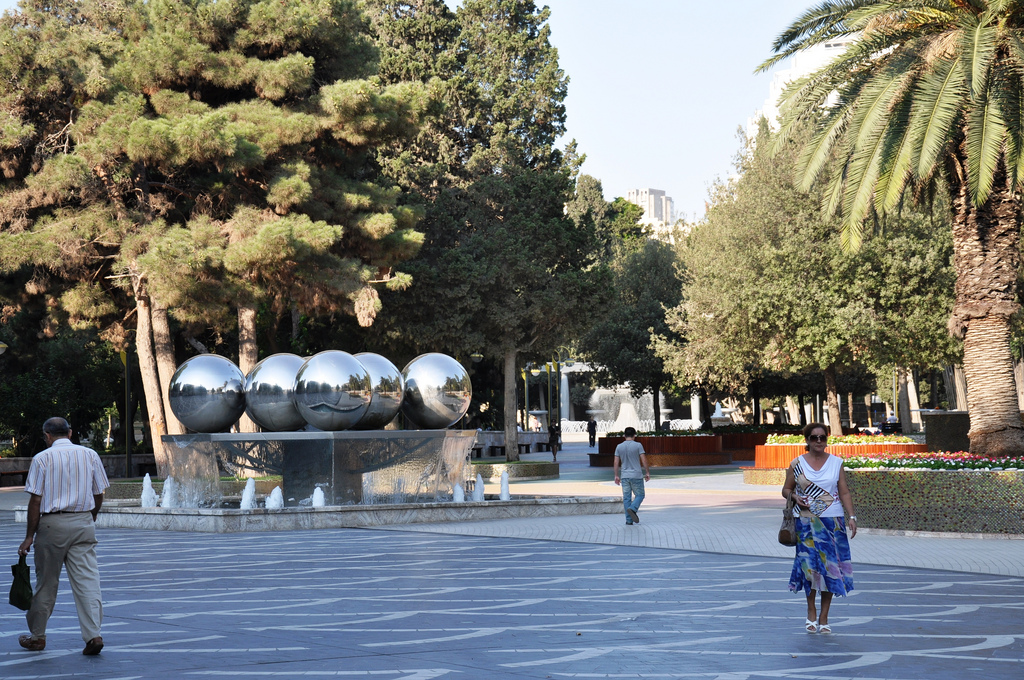
Martyr’s Lane
Very well designed and impressive memorial built for the memories of military and civilian losses of Azerbaijan. Besides, there is monument for the Turkish soldiers died in 1918 for the independence of Azerbaijan. It is a peaceful area and offers a very nice panorama of Baku and view to Baku Bay from the top of the hill. Towards the coast-side of Martyr's Lane there is a large stone shelter that houses the Eternal Flame. These are very nice places to wonder and learn a little about the conflicts in Azeri history.
The cemetery makes heavy use of headstones and memorials where the face of the fallen is laser-etched into the black stone offering a stunning and eerie insight into the people under the stone. Also interred in the grounds are a significant number of British war died who died in 1918, attempting to shore up the new independent Azeri state following the collapse of the Russian Empire or protect British oil interests in the region. Also given prominence are Turkish soldiers who fell in defense of Azerbaijan.
This place is next to Flame Towers and there is a nice mosque, worth to visit, within park. You can take the funicular, but it is not that much difficult to reach by walking.
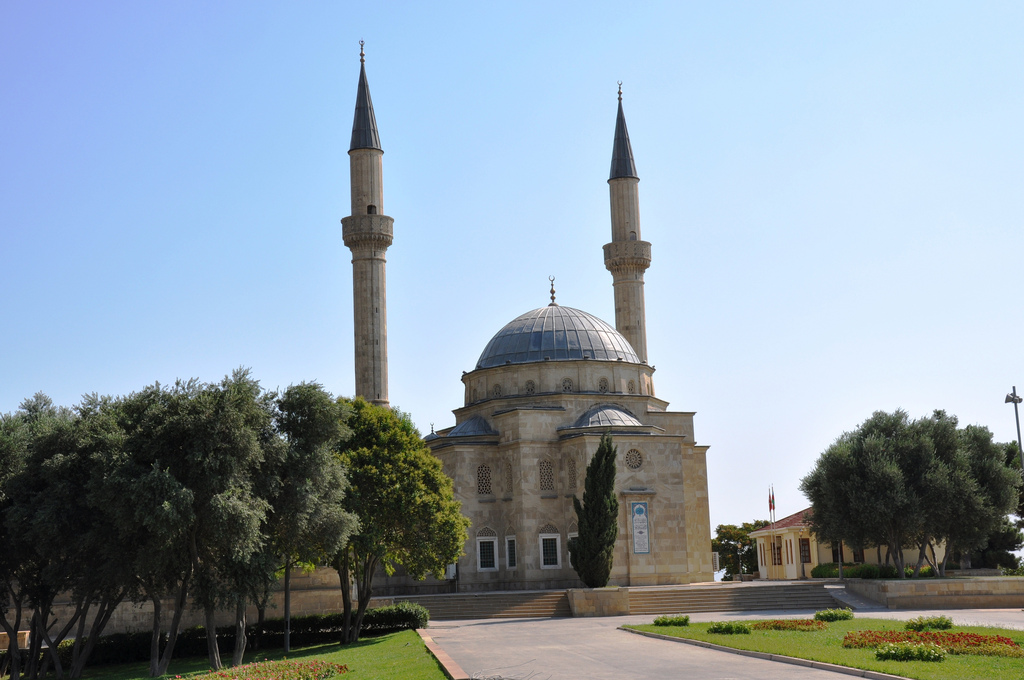
Flame Towers
Flame Towers are now the modern face of Baku literally seen from every corner of Azeri capital. They are a perfect symbol for a country looking to define itself as a modern city yet pay homage to their background and unique landscape where gas can in some places seem from the ground. This is a truly great piece of architecture and looking at it at the night one can realise why it is called "flame towers." Make sure to catch the scene in the moonlight, it is awesome! The display changes from the flames to the Azerbaijan flag to athletes waving national flags.
The complex includes three towers: one is Fairmont Hotel, the other one is business centre and the third tower is purely residential.

Gobustan Petroglyphs
Gobustan Petroglyphs is a UNESCO listed site about 40kms south of Baku. It is definitely a unique place but one has to have a specific interest in this kind of attraction. There are over 5000 rock drawings/carvings dating from around 10,000 BC, some of the oldest in the world. They are found amongst the rocks and cliffs of a small dry valley and include relief carvings of many types of animal and of men hunting, in boats and, seemingly, dancing. The new museum at the site (explanations in English) is above average and a good place to start. The petroglyphs here are remarkably similar to ones in Norway (but there they are of later period) and led Thor Heyerdahl (of Kon Tiki fame) to theorise this may have been where Scandinavians originated. On a rock 500m north of the museum is also a Roman inscription, reputedly the easternmost evidence of the spread of their influence.
The newly done museum gave a good overview of the peoples and their culture and art that was in the area, as well as some about the flora and fauna of the periods of settlement. You can take a guided tour so you would not have to stand in front of the stones for ages not to miss the important ones. They also have guided tours in English.
Whether or not you are interested in petroglyphs, anthropology, geology or archaeology, allow yourself the gift of visiting Gobustan. It is an inspiring record of human life and a living reminder of where we have come from and what was of importance and preoccupied humanity then and now.
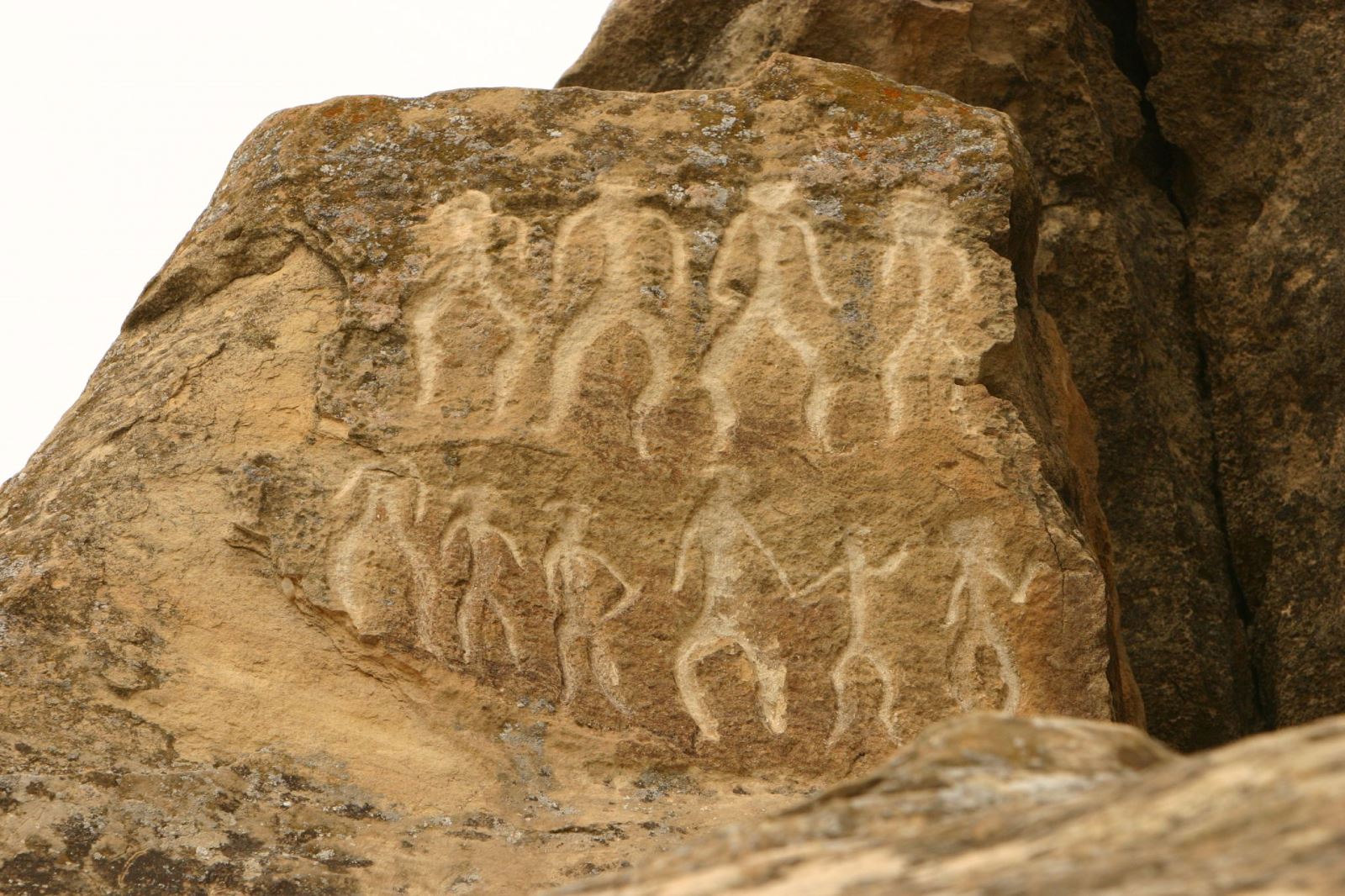
Mud volcanoes
Azerbaijan's mud volcanoes definitely should be part of any tourist's itinerary. So many of them are within close proximity to Baku, especially those at Alyat, Gobustan and other locations. Mud volcanoes come in a variety of shapes and sizes, but those most common in Azerbaijan have several small cones, or vents. These small cones are an amazing and even beautiful sight. They emit cold mud, water and gas. They are often characterized by rude gurgling noises to the delight of children. On hot summer days, the gryphons and salses provide them with hours of entertainment. (Suggestion: take plenty of clean clothes, plastic bags for muddy clothes, and your own supply of water to wash off afterwards.)
Chemically, volcanic mud is composed primarily of silica (5570 percent). In addition, the mud has been found to contain quantities of curative properties (iodine, bromine, calcium, magnesium, organic acids and aromatic hydrocarbons - to name just a few). As the mud solution has no significant toxic substances, it has been recommended as a curative agent for mud baths and use at spas. Just as in the Russian towns of Feodosia and Kerch, there is potential for Azerbaijan to develop its own spas from this volcanic mud.
With the limited number of tourists that visit Azerbaijan today, the volcanoes are not under any serious threat. However, with their distinctive 'lunar' landscape, scientific interest, tourist and spa potential, there is the possibility that one day too many tourists could lead to inevitable degradation and damage. Mud volcanos are themselves unique monuments and need to be protected for future posterity. The process has already begun as 23 mud volcanoes were designated for protection recently.

Ateshgah Fire Temple
A well restored open temple complex around several fires issuing from the earth - though you should be aware that nowadays find the gas is piped from the local mains. Nevertheless, it gives a good idea of what the area was famous for in mediaeval times. The place perhaps is not worth a special effort but worth stopping by if you are in Abseron area (just north of Baku).
A few of the rooms surrounding the courtyard have interesting historical information. The rest have creepy life-size figures showing how devotees of fire worship did penance. Most of them are reminiscent of torture chambers. There is not much to see other than have a quiet stroll through the cemetery. The best time to visit would be at night, when everything would be lit up.

Fire mountain - Yanardag
Fire Mountain is not too far from Ateshgah and here you can see some natural gas fire being omitted from the rocks of a hill. Though not professionally maintained and advertised, the mere natural phenomenon of it is breath taking. It is not a mountain covered with fire as many think. Actually it is a small hill with tongues of flame coming up from the hill's bottom. A wall of flame about 20 meters long that has burned for hundreds of years, even during rainy and snowy weather. In the old times there used to be a lot of these fires, which gave the name Azerbaijan - Land of Fire to this country. It´s good to have the chance to look at one of the lasts, before it get exhausted like the one in the Zoroastrian Ateshgah Temple.
It is a more dramatic sight at night when it is recommended to visit. The site is small and there is a small admission charge. But you have direct and unimpeded access to the fire. No fences, no safety zones...if you want to walk up and experience the fire, no-one and nothing is going to stop you.
